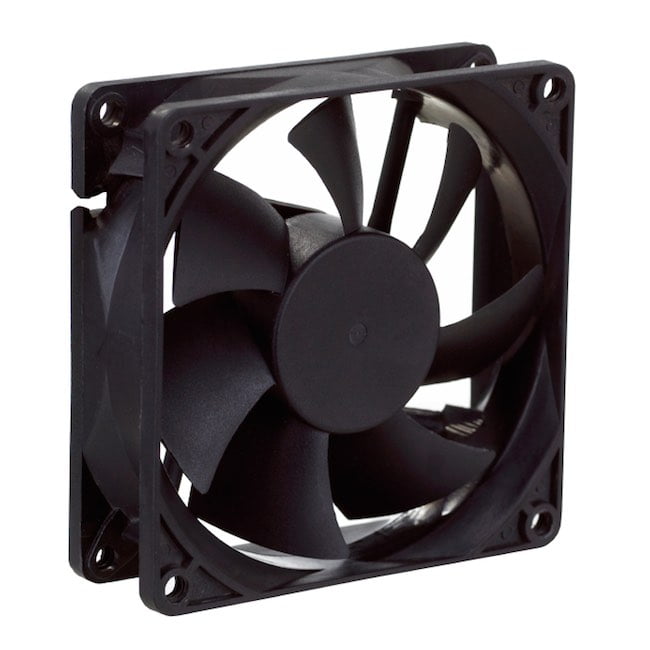5 Limitations of an Electrical Enclosure Cooling Fan

The electrical enclosure cooling fan is a double-edged sword. On one hand, it is an excellent, efficient and the most economical enclosure cooling solution. On the other hand, it has several stipulations to its use that makes it unsuitable for many applications. If any of the items in the following list applies to your application, you will not be able to solve the thermal management problem with the enclosure cooling fan.
1. Cooling Fans Cannot Handle High Heat Dissipation Rates
Cooling fans lower enclosure temperature through forced convection. They are not a closed loop cooling solution, thus they are not suitable for situations or locations with extreme temperatures. The key factors for determining cooling fan viability are airflow rate (CFM) and equipment layout and system resistance.
- Airflow Rate, or CFM (cubic feet per minute), measures the cooling rate of a fan that takes into account the heat load to be dissipated, the necessary temperature differential, and the specific heat capacity of air.
- Equipment Layout can impede airflow, creating system resistance and lowering the efficacy of cooling fans. Moreover, each filter in the air flow reduces the CFM by about one third. If air cannot move freely enough through the enclosure, fans may not dissipate enough heat.
To determine whether or not a cooling fan will perform adequately in an enclosure, use an online calculator that can determine the required cooling capacity and recommend the most appropriate and efficient solution.
2. Cooling Fans Are Unsuitable for High Ambient Temperature
Electrical enclosure cooling fans are open-loop cooling devices and are only capable of cooling enclosures to temperatures above the ambient temperature. All electrical equipment have a maximum operating temperature above which they are susceptible to performance degradation and risk of failure. If the ambient temperature fluctuates to levels that are not conducive for operation of your electrical equipment, the cooling fan is not suitable for use.
3. Cooling Fans Cannot Handle High Levels of Particulate Matter in the Environment
Particulate matter, dirt and dust in the environment can damage your electrical equipment. The deposition of dust and dirt in critical components in your equipment can cause short-circuits and even failure. Electrical enclosure cooling fans, even equipped with filters, are incapable of sufficiently handling particulate matter in the environment.
4. Cooling Fans Cannot Be Used in High Humidity Environments
If the enclosure is located in a humid environment or if the environment has high levels of dispersed oil, electrical enclosure cooling fans cannot be used. When oil or water droplets condense on the surface of the equipment, they are likely to contact vulnerable areas that could increase the risk of fire or electrical hazard. While the presence of 3R shrouds can protect the equipment against precipitation, they cannot manage humidity in the air.
5. Cooling Fans Have No Answer to Hot Spots
Electrical enclosure cooling fans rely on the convective heat transfer properties of air to remove heat from the enclosure. For efficient heat dissipation, the airflow has to contact all high temperature regions within the enclosure. Often, electrical equipment is not laid out within the enclosure with the cooling fan air flow path in mind. Obstructions in the path of the airflow cause certain regions in the enclosure to not be exposed to sufficient air flow. As a result, these regions continue to get hotter and are termed as ‘hot spots’. Internal circulating fans can cause mixing of enclosure air therefore removing some thermal hot spots, but not always all of them.
If your application has any of these constraints which render the enclosure cooling fan unsuitable, contact our experienced sales team at Thermal Edge. We will help you choose the best appropriately sized enclosure cooling product for your application.

